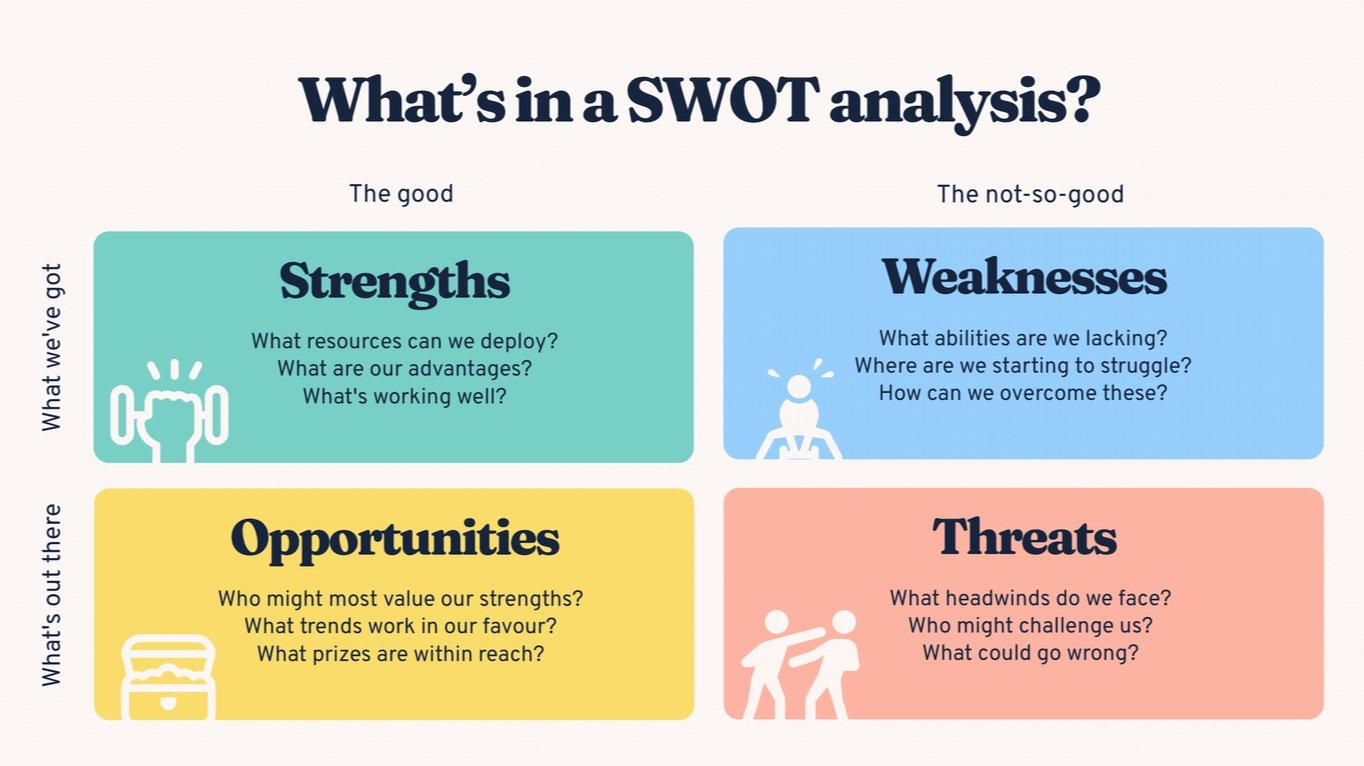
The 80/20 Rule: How to Focus on What Really Matters in Business
In business, time and resources are limited, making it crucial to focus on what truly drives success. The 80/20 Rule, also known as the Pareto Principle, states that 80% of results come from 20% of efforts. Understanding and applying this principle can help businesses maximize efficiency, streamline operations, and improve profitability.

How to Build a High-Performing Team for Your Business
Building a high-performing team is essential for business success. A strong team not only increases productivity but also fosters innovation, improves morale, and enhances overall workplace satisfaction. Whether you're starting a new company or looking to optimize your existing workforce, here are key strategies to create and sustain a high-performing team.

The Pros and Cons of Outsourcing vs. In-House Operations
As businesses grow, they face a critical decision: should they handle operations in-house or outsource to external providers? Both approaches have advantages and drawbacks, and the right choice depends on factors such as cost, control, expertise, and scalability. This guide explores the pros and cons of outsourcing versus in-house operations to help you make an informed decision for your business.

How to Create a Financially Resilient Business
In today’s unpredictable economy, financial resilience is a must for any business looking to survive and thrive. Unexpected downturns, industry shifts, and market fluctuations can all pose significant challenges. However, businesses that prioritize financial stability can weather these storms and emerge stronger. Here’s how you can create a financially resilient business.

Top Lead Generation Strategies for B2B Companies
Generating high-quality leads is essential for any B2B company looking to grow and sustain success. Unlike B2C lead generation, B2B strategies require a more targeted and relationship-driven approach. Below are some of the most effective lead generation strategies for B2B companies to attract, engage, and convert potential clients.

The Danger of “Not Invented Here” Syndrome: Why Rejecting Outside Ideas Hurts Growth
In the fast-paced world of business, innovation is crucial for long-term success. Yet, many companies fall into the trap of "Not Invented Here" (NIH) syndrome—a mindset that rejects external ideas simply because they weren’t developed in-house. This resistance to outside innovation can stifle growth, hinder efficiency, and allow competitors to pull ahead. Here’s why NIH syndrome is dangerous and how businesses can overcome it.

The Dissolution of Federal DEI Initiatives: What It Means for Businesses
In a significant shift in policy, the federal government has recently moved to dissolve Diversity, Equity, and Inclusion (DEI) initiatives across various sectors. This decision has sparked widespread debate, leaving businesses to navigate the changing landscape of workplace diversity efforts. Whether your company has been actively engaged in DEI programs or just beginning to explore their benefits, understanding the implications of this dissolution is crucial.

Beyond Compliance: Building Transparent Pay Structures That Foster Trust
In today's competitive business landscape, fostering trust within an organization is not just a moral obligation—it's a strategic necessity. Transparency in pay structures is one of the most effective ways to build that trust while ensuring compliance with evolving laws and societal expectations. By going beyond basic regulatory requirements, businesses can create a culture of openness, equity, and empowerment that benefits both employees and the organization as a whole.

The Benefits of Offering Flexible Work Arrangements for Employee Well-Being
In today’s fast-paced business landscape, organizations are increasingly recognizing the importance of employee well-being in driving productivity, retention, and overall success. One of the most impactful ways to enhance well-being is by offering flexible work arrangements. Whether it’s remote work options, flexible hours, or compressed workweeks, these arrangements benefit both employees and employers. Here’s a closer look at why flexibility in the workplace matters and how it can positively impact your team.

Leadership Styles That Drive Team Performance and Morale
Leadership plays a crucial role in shaping team dynamics and achieving organizational success. The way a leader guides their team can significantly impact performance, morale, and overall workplace satisfaction. Understanding and adopting the right leadership style is key to fostering a productive and motivated team. Here are some of the most effective leadership styles and how they drive team performance and morale.

The Role of Employee Feedback in Business Development
Business development isn’t just about forging new partnerships, generating leads, or expanding your market reach—it’s also about fostering a strong, engaged, and innovative internal culture. One often overlooked yet invaluable resource for business growth lies within your organization: your employees.
By actively seeking and leveraging employee feedback, businesses can uncover insights to refine processes, enhance customer experiences, and drive overall growth. Here’s how employee feedback plays a pivotal role in business development.

Effective Time Management for Business Owners: Strategies for Success
As a business owner, managing your time effectively is crucial to the success of your organization. With multiple tasks competing for your attention, it's easy to get bogged down in non-essential activities and lose sight of your goals. In this article, we'll explore effective time management techniques for business owners, including prioritization, delegation, and goal-setting.

Why Corporate Social Responsibility Is Good for Business
Corporate Social Responsibility (CSR) has evolved from being a “nice-to-have” to a critical component of modern business strategy. Today’s consumers, employees, and investors are looking beyond profit margins; they want to know how businesses impact society and the environment. Companies that embrace CSR reap significant benefits that extend far beyond goodwill. Let’s explore why adopting CSR initiatives is not just ethical but also advantageous for your bottom line.

The Increasing Popularity of the 4-Day Work Week and Its Benefits
In recent years, the concept of the 4-day work week has gained significant traction among companies and employees worldwide. Once considered a radical idea, this alternative work schedule is now being embraced as a viable solution to improve productivity, employee well-being, and workplace culture. In this blog, we’ll explore why the 4-day work week is gaining popularity and the benefits it offers to both businesses and workers.

How Fair Compensation Drives Productivity and Loyalty
In today’s competitive job market, employees aren’t just looking for a paycheck—they’re seeking recognition, respect, and fairness. Fair compensation is more than just meeting industry standards; it’s a cornerstone of a thriving, productive workplace. Here’s how paying employees what they’re worth directly impacts productivity and loyalty.

The Importance of Risk Assessment in Business Strategy
In today's unpredictable business landscape, companies are constantly navigating challenges that can disrupt their operations and threaten their success. Whether it's economic fluctuations, technological advancements, or shifting consumer behaviors, risks are inevitable. The key to thriving amid uncertainty is understanding and managing these risks effectively. This is where risk assessment becomes crucial to any comprehensive business strategy.

Overcoming Common Challenges in Business Expansion
Expanding a business is an exciting milestone that signals growth, increased demand, and new market opportunities. However, it also comes with its fair share of challenges. Many companies underestimate the complexities involved in scaling up, which can lead to costly mistakes. Whether you're a small business owner looking to open a new location or a larger organization aiming to enter a new market, navigating the expansion process effectively is crucial for sustainable growth. Below, we’ll explore the most common challenges in business expansion and strategies to overcome them.

Crisis Management for B2B: How to Respond to Unexpected Challenges
In the fast-paced B2B landscape, even the best-prepared businesses can encounter unexpected challenges, from economic shifts to supply chain disruptions. For B2B companies, a crisis doesn’t just impact day-to-day operations—it can also strain client relationships, threaten reputations, and disrupt future growth. A strong crisis management strategy is essential for quickly adapting to unforeseen events while keeping stakeholders informed and supported.
In this post, we’ll explore the steps B2B businesses can take to respond effectively to unexpected challenges, helping to ensure continuity, protect relationships, and minimize potential damage.

How to Conduct a SWOT Analysis for Strategic Planning
When building a strategic plan, one of the most valuable tools for gaining a comprehensive view of your organization’s position in the market is the SWOT analysis. SWOT stands for Strengths, Weaknesses, Opportunities, and Threats, and it’s a foundational tool for understanding the internal and external factors that could influence your business’s success. In this blog, we’ll guide you through each step of conducting a SWOT analysis, offering tips to maximize its impact on your strategic planning process.

The Startup Graveyard: Lessons from Businesses That Died Too Soon
The startup world is exhilarating, full of ambitious dreams, disruptive ideas, and the promise of overnight success. Yet, behind the glamorous headlines of billion-dollar valuations and unicorns lies a sobering reality—most startups never make it. They die quietly, often in the "Startup Graveyard," leaving behind lessons for the future entrepreneurs brave enough to venture in their footsteps.
But these failures aren’t just cautionary tales—they’re valuable gold mines of wisdom. Let’s take a walk through the Startup Graveyard and unearth the key lessons from businesses that died too soon.